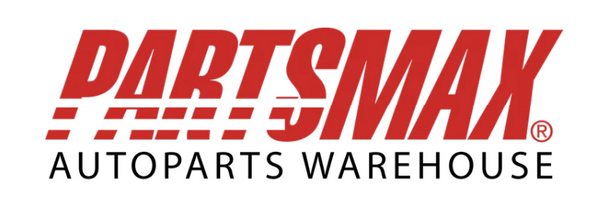Aftermarket radiators are among the most crucial yet often overlooked performance upgrades for any serious automotive build. Whether you're pushing more horsepower, tackling track days, or simply seeking improved reliability, understanding cooling system upgrades is essential. In this comprehensive guide, we'll explore everything you need to know about selecting, installing, and optimizing aftermarket radiators for your vehicle.
Understanding Radiator Basics
A radiator is your engine's primary cooling system component, facilitating heat exchange between the coolant and outside air. The stock radiator in your vehicle was designed to handle factory power levels and typical driving conditions. However, the factory cooling system can quickly become overwhelmed when you increase horsepower, add forced induction, or subject your vehicle to more demanding conditions.
Signs You Need an Aftermarket Radiator
Several indicators suggest your cooling system needs an upgrade:
- High-temperature readings during normal driving
- Temperature spikes during performance-driving
- Coolant loss or overflow tank issues
- Engine power reduction due to heat soak
- Recovery time after aggressive driving sessions
Materials Matter: Construction Types
Modern aftermarket radiators typically utilize one of three primary construction materials:
Aluminum: The most common choice for performance applications, offering excellent heat dissipation and weight reduction. All-aluminum radiators provide superior cooling efficiency and durability compared to stock units.
Copper/Brass: Traditional construction that offers excellent heat transfer properties. While heavier than aluminum, copper/brass radiators remain popular in classic car applications and some high-performance builds.
Mixed Materials: Some manufacturers combine different materials to optimize performance and cost. These hybrid designs can offer good performance at a more accessible price point.

Core Design and Technology
The core design significantly impacts cooling efficiency. Modern aftermarket radiators often feature:
- High-density fin counts for increased surface area
- Larger tube diameters for improved flow
- Strategic baffle placement for optimized coolant distribution
- Precision welded tanks for durability
- Enhanced mounting points for proper fitment
Size and Fitment Considerations
Bigger isn't always better when it comes to radiator selection. Key factors include:
- Physical space constraints in your engine bay
- Compatibility with existing cooling fans
- Mounting point alignment Inlet/outlet size and location
- Overall system capacity requirements
Performance Benefits
Quality aftermarket radiators can provide several advantages:
- Temperature reduction of 10-20 degrees under load
- Faster recovery times after high-stress operation
- Improved consistency during track sessions
- Reduced risk of heat-related engine damage
- Enhanced longevity of engine components
Installation Considerations
Professional installation ensures optimal performance. Critical steps include:
- System flushing before installation
- Proper mounting and alignment
- Appropriate fan selection and positioning
- High-quality coolant selection
- Thorough system bleeding
Common Frequently Asked Questions (FAQ)
How much cooling improvement can I expect?
A quality aftermarket radiator typically provides 15-30% improved cooling capacity over stock units. However, results depend on various factors, including ambient conditions, driving style, and overall system design.
Are aluminum radiators better than copper/brass?
Aluminum radiators offer excellent cooling performance with significant weight savings. While copper/brass units provide good heat transfer, aluminum's lighter weight and corrosion resistance make it the preferred choice for most modern applications.
What's the average lifespan of an aftermarket radiator?
Quality aftermarket radiators can last 8-10 years or more with proper maintenance. Regular inspection and coolant maintenance significantly impact longevity.
Does radiator size affect engine performance?
While radiator size alone doesn't increase horsepower, proper cooling allows your engine to maintain peak performance longer by preventing heat-related power loss.
Maintenance Best Practices
Regular maintenance ensures optimal performance:
- Annual coolant testing and replacement
- Periodic pressure testing
- Regular visual inspections
- Fan and shroud maintenance
- Hose and clamp inspection
Cost Analysis
Investment in an aftermarket radiator varies based on application:
Entry-level upgrades: $200-400
Mid-range performance units: $400-800
Premium racing radiators: $800-1500+
Installation costs (if professional): $200-500
Common Mistakes to Avoid
Several pitfalls can compromise radiator performance:
- Improper sizing for application
- Mixing incompatible coolants
- Inadequate fan capacity
- Poor mounting technique
- Incomplete system bleeding
Supporting Modifications
Maximize your radiator's effectiveness with:
- High-flow water pumps
- Performance thermostat
- Silicone hose upgrades
- Electric fan conversion
- Expansion tank upgrades
Racing and Competition Considerations
Track day and racing applications require special attention:
- Additional cooling capacity requirements
- Proper air ducting
- Contingency planning
- Regular inspection schedules
- Temperature monitoring systems
- Future Trends in Cooling Technology
The cooling system market continues to evolve:
- Advanced materials development
- Improved core designs
- Smart cooling management systems
- Integration with vehicle electronics
- Enhanced manufacturing techniques
- Conclusion
Selecting the right aftermarket radiator is crucial for maintaining optimal engine performance and reliability. By understanding your specific needs, choosing quality components, and ensuring proper installation, you can create a cooling system that keeps your engine strong under any conditions. Remember that a well-designed cooling system begins with a quality aftermarket radiator as its foundation.
Ready to upgrade your vehicle's cooling system?
Visit PartsMax online or at our Miami warehouse to explore our extensive selection of high-quality aftermarket auto parts. While we don't carry radiators that require professional installation, we stock all the supporting components you need for your cooling system upgrade.
Contact us at (305) 691-1313 or visit our facility at 3401 NW 73rd ST, Miami, FL 33147 to discuss your performance needs. Our knowledgeable staff can help you select the right components to complement your radiator upgrade and ensure your engine stays cool under pressure.

